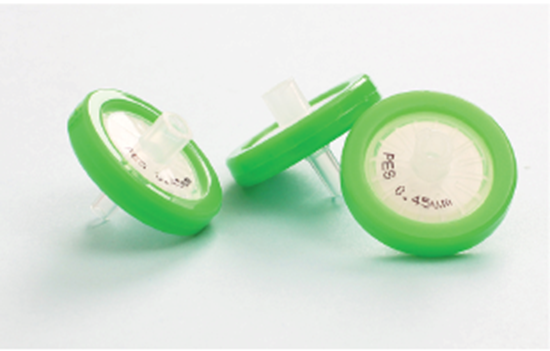Posted by Chrom Tech on 14th Oct 2025
Syringe Filters vs Filter Vials: What is the Best Method for Filtration?
In chromatography, most samples taken directly from their source require some level of sample preparation before injection into the analytical instrument. The goal is to remove particulates and contaminants that could damage the column or skew results—creating a clean, reliable sample for analysis. While preparation methods vary from simple “dilute and shoot” techniques to multi-step purification processes, filtration remains one of the most common and effective sample prep strategies.
Two of the most popular filtration options in chromatography labs are syringe filters and filter vials. Both serve the same fundamental purpose—removing particulates from your sample—but they differ in convenience, design, and cost. Understanding these differences will help you choose the best option for your workflow.

Syringe Filters
Syringe filters are a classic, economical solution for small-volume sample filtration. Each unit is a compact plastic disc containing a filter membrane and a luer connection that attaches directly to a syringe. Once attached, the sample is pushed through the membrane, producing a clear filtrate that can be collected into an HPLC vial or other sample container.
Chrom Tech offers syringe filters in a variety of membrane types—including Nylon, PTFE, PVDF, PES, CA (Cellulose Acetate), Polypropylene, and Glass Fiber—allowing you to choose the best material for your solvent compatibility and application.
For heavily contaminated or viscous samples, glass prefilter syringe filters are available. These include an additional glass fiber layer that captures large particulates before the main membrane, extending filter life and improving flow rate for demanding applications.

Filter Vials
Filter vials combine the filtration membrane and the collection vial into one convenient unit, streamlining the sample prep process. The design keeps samples fully contained, reducing the risk of contamination and eliminating the need for syringe transfers.
To filter a sample, simply pipette it into the bottom chamber of the vial. When the cap is pressed down, the built-in membrane filters the sample into the upper section, leaving particulates behind. The filtered sample is now ready for direct injection into your UHPLC or HPLC system, minimizing handling errors and saving valuable time in high-throughput labs.
Syringe Filters vs. Filter Vials: Choosing the Right Option
Both filtration formats are efficient and easy to use, but the right choice depends on your application:
- Syringe Filters – More economical and available in a wide range of membrane chemistries and pore sizes. Ideal for general lab use and high-volume sample prep.
- Filter Vials – Offer convenience, speed, and contamination control by combining filtration and storage in one sealed device. Perfect for UHPLC and HPLC workflows where consistency and efficiency are key.
For labs working with a variety of samples, many customers keep both options on hand—using syringe filters for general filtration and filter vials for critical or high-throughput applications.

Need help selecting the right filter for your solvent or sample type? Our technical support team can help you determine the best membrane and configuration for your workflow.
Frequently Asked Questions About Sample Filtration
What is the main difference between a syringe filter and a filter vial?
A syringe filter requires a separate syringe and vial, while a filter vial combines both functions into one self-contained unit. Filter vials reduce handling steps, while syringe filters are more cost-effective and flexible for varied applications.
Which membrane type should I use for my sample?
The choice depends on your solvent and analyte. For example, PTFE is ideal for aggressive organic solvents, Nylon for aqueous-organic mixtures, and PES for low-protein binding biological samples. See our membrane selection guide above for details.
Are filter vials compatible with UHPLC systems?
Yes. Filter vials are designed for UHPLC and HPLC applications, maintaining sample integrity and preventing particulates from clogging narrow-bore columns.
Where can I purchase Chrom Tech syringe filters and filter vials?
You can explore our full selection of syringe filters and filter vials directly on chromtech.com. We stock a wide range of membranes and sizes for fast delivery.

